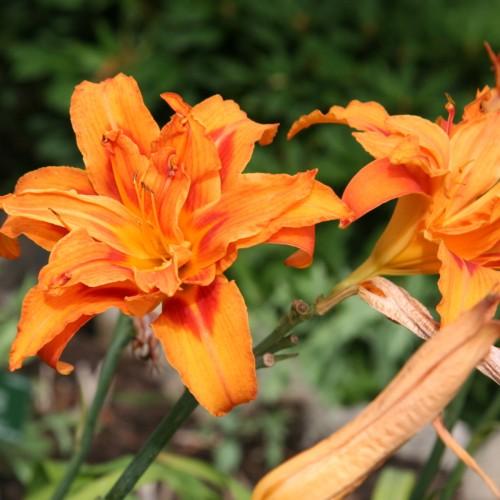
daylily
Hemerocallis 'Double Pompom'
Cycle:
Herbaceous Perennial
Watering:
Average
Hardiness Zone:
3 - 8
Flowers:
Flowers In Spring
Sun:
Full sun,part shade
Leaf:
Yes
Growth Rate:
High
Maintenance:
Low
Drought Tolerant:
Yes
Salt Tolerant:
Yes
watering
Water your daylily when the top 1-2 inches of soil are dry. During months with higher temperatures, water more frequently. Apply about 1 inch of water per week, spread out in 2 to 3 waterings. Avoid saturating the soil when watering your daylily as it can cause the roots to rot. In the fall, reduce watering as temperatures cool off. Stop watering when the leaves start to yellow.
sunlight
Daylily (Hemerocallis 'Double Pompom') require 6-8 hours of full sun per day. It is best for the plant to get morning sun and afternoon shade. This will help prevent the leaves of the daylily from becoming scorched in the hot afternoon sun. In areas with intense heat, some afternoon shade will help prevent the daylily from wilting. During periods of intense heat, some afternoon shade is beneficial in protecting the daylily from wilting.
pruning
Daylily (Hemerocallis 'Double Pompom') should be pruned in late Spring or early Summer, before the flowering season. Pruning should be done by deadheading the spent flowers. Cut the stem below the point of wilted blooms to encourage new flowering. For pruning established plants, cutting back of dead foliage to the ground once a year in the fall can help to promote new, healthy growth in the spring. It is important to never prune more than 1-third of the foliage at 1 time, as this can cause stress to the plant.
